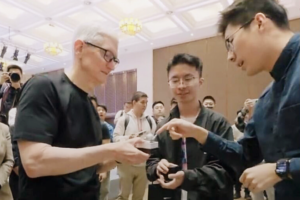Weekly News Summary: Emerging Semiconductor Companies in China; Intel Japan Chair Supports Gelsinger Strategies
Weekly News Highlights in the Semiconductor Industry
The semiconductor industry continues to evolve rapidly, with significant developments emerging globally. This article provides a summary of the latest news, focusing on the growth of semiconductor businesses in China and key strategies from industry leaders, particularly Intel.
China’s Semiconductor Ambitions
Rise of New Players
Recent reports indicate that new semiconductor companies, similar to DeepSeek, may be rising in China. This indicates a potential shift in the global semiconductor landscape, where China is striving to enhance its self-sufficiency in technology. With heavy investments in research and development, these companies aim to compete seriously with established giants in the industry.
Government Support
The Chinese government is backing the semiconductor sector’s expansion through various initiatives and funding. This support is crucial for fostering innovation and ensuring the growth of homegrown semiconductor firms. With increasing global demand for chips, the government aims to strengthen its position in this pivotal industry.
Intel’s Strategies and Leadership
Intel Japan’s Vision
In related news, the chair of Intel Japan defended CEO Pat Gelsinger’s strategies amid scrutiny about the company’s direction. Under Gelsinger’s leadership, Intel focuses on restoring its leading position in the semiconductor market by investing heavily in manufacturing capabilities and innovation.
Focus on Manufacturing
Gelsinger has emphasized the importance of increasing semiconductor production capacity within the United States and allied nations. His strategy includes building new fabrication plants, known as fabs, which will not only boost local economies but also reduce reliance on foreign chip manufacturers.
The Competitive Landscape
Challenges for Established Corporations
The semiconductor industry is highly competitive, facing challenges from both established companies and new entrants. Traditional giants like Intel must adapt to the rapidly changing market dynamics and innovate to retain their market share. The competition is intensifying, driven by advancements in technology and growing demand across various sectors, including automotive, consumer electronics, and telecommunications.
Collaborative Efforts
As companies navigate this competitive terrain, collaborations and partnerships are becoming more common. Industry players are recognizing the value of pooling resources and expertise to accelerate technological advancements. Partnerships could help mitigate challenges related to research and development costs, which are significant in the semiconductor industry.
The Future of the Semiconductor Industry
Trends to Watch
Several trends are shaping the future landscape of the semiconductor industry:
Increased Demand for AI and ML: The rising use of artificial intelligence (AI) and machine learning (ML) technologies is driving demand for advanced semiconductors that can handle complex computations efficiently.
Expansion of 5G Technology: As 5G networks expand globally, so does the need for new semiconductor solutions tailored for high-speed connectivity.
- Emergence of Sustainable Practices: With growing concerns about environmental impacts, semiconductor companies are focusing on sustainable practices in production and materials used.
Innovation as a Key Driver
Innovation remains critical in the semiconductor sector. Companies that invest in next-generation technologies, such as quantum computing or advanced materials, are likely to lead the market in the years to come. Continuous innovation will enable firms to meet evolving consumer demands and stay ahead of the competition.
With the semiconductor industry positioned at the forefront of technological advancement, ongoing developments will be essential to watch for both investors and technology enthusiasts alike. The interplay of new competitors in China, Intel’s strategic decisions, and the overall dynamics of the industry will shape its future trajectory.






